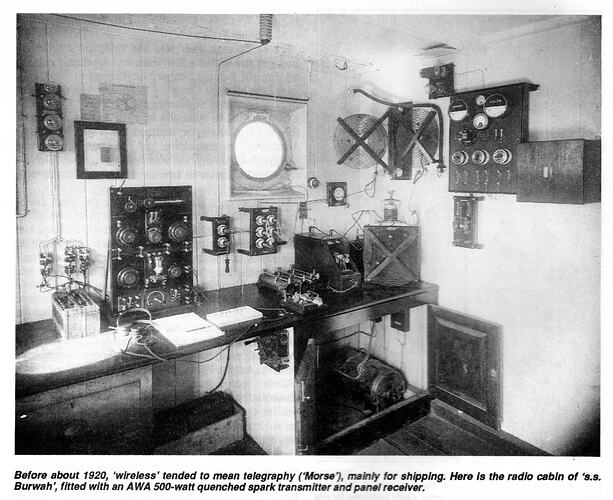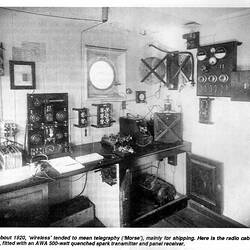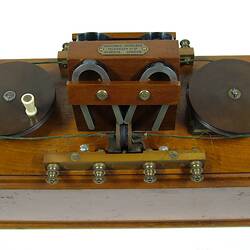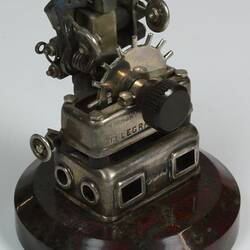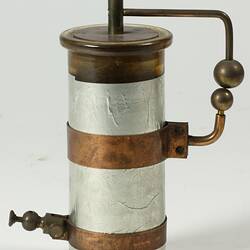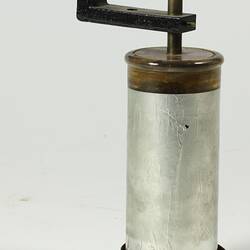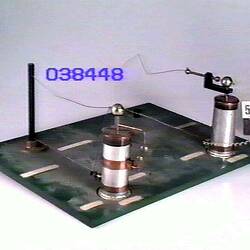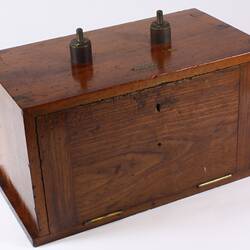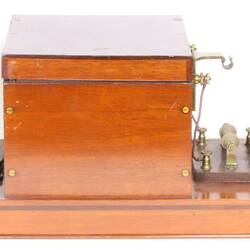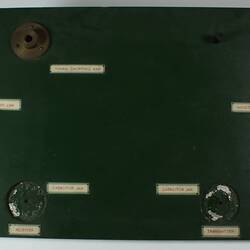Events & Discoveries that led to the use of Radio: 1821 - 1902
A number of important events and discoveries preceded the practical realisation of radio, or 'wireless telegraphy' as it was originally called.
1821: Hans Christian Oersted discovers that an electric current creates a magnetic field.
1831: Michael Faraday finds that a changing magnetic field would generate an electric current.
Circa 1837: the electric telegraph appeared on both sides of the Atlantic in about 1837.
1865: James Clerk Maxwell determines the mathematical integration of the observed relationships between electricity and magnetism. These equations correctly predicted the speed of light (based on the measurable electromagnetic properties of free space) leading Maxwell to conclude that light was an electromagnetic wave.
1887: Heinrich Hertz established that electromagnetic waves could be generated by electrical means.
1894 to 1896: Guglielmo Marconi, after two years of experimentation, successfully transmitted radio signals over a distance of about 1.5 km.
1896: Marconi moved to England.
1897: Marconi granted patent for his system of wireless telegraphy. He set up the 'Wireless Telegraph and Signal Company Ltd' to commercialise his system. A short time later the name was changed to 'Marconi's Wireless Telegraph Company Ltd.' The remainder of the 19th century was spent experimenting and demonstrating with longer and longer paths culminating successful signalling across the English Channel.
Circa 1898: synchronised tuning to maximise the transfer of energy between two tuned circuits was demonstrated by Oliver Lodge.
1900: Marconi developed tuned transmitters that concentrated the transmitted power into a narrow band centred on a controllable frequency; he also developed receivers that could be tuned to a specified frequency. This allowed multiple stations to operate in the same area without interfering with each other. Before this time, all spark systems were essentially untuned, the only frequency dependent elements were the transmitting and receiving aerials themselves which were normally made to be of similar dimensions to achieve the best results. Lack of tuning meant that the transmitted signal covered a rather wide bandwidth and the receivers were unable to select a particular signal.
1901: Marconi carried out the first trans-Atlantic transmission. The receiver used a coherer and was essentially untuned.
1902: Marconi tested ship (receiver) to shore (transmitter).
Early use of Radio: 1900 - 1914
The period from 1900 to 1914 contained the key events in the development of radio. During this time it moved from a scientific curiosity, only experienced in the laboratory or in large-scale scale experiments and demonstrations to the stage where wireless equipment was becoming common on ships.
The main use of radio at that time was for ship to shore and ship to ship communication. During this period radio communication was telegraphic and was referred to as 'wireless telegraphy'. Although the Fleming diode and DeForest audion were invented during this period they were not widely used.
The main components of a wireless telegraph station were a spark transmitter and a receiver which could be based on a crystal detector, a magnetic detector or a coherer. None of these detectors were particularly sensitive and no means of amplifying the radio frequency signal existed so to achieve a useful range, aerials had to be as large as possible and the transmitter power had to be as high as was practicable. A typical ship's spark transmitter was rated at 1.5 kW. Frequencies used tended to be low as it was believed at that time that the longer the wavelength the better the range. Wavelengths from 6000 m to 600 m (50 kHz to 500 kHz) were where most of the activity took place.
More Information
-
Keywords
-
Authors
-
Article types
